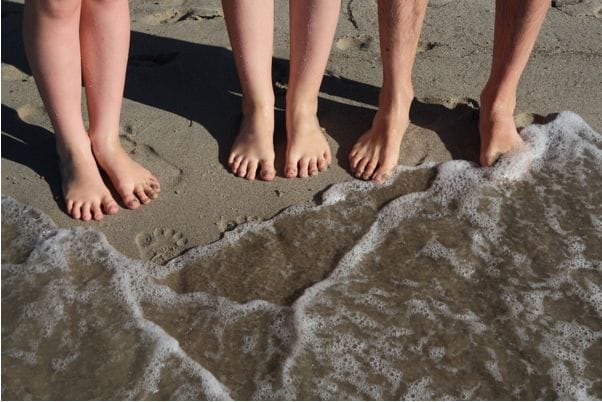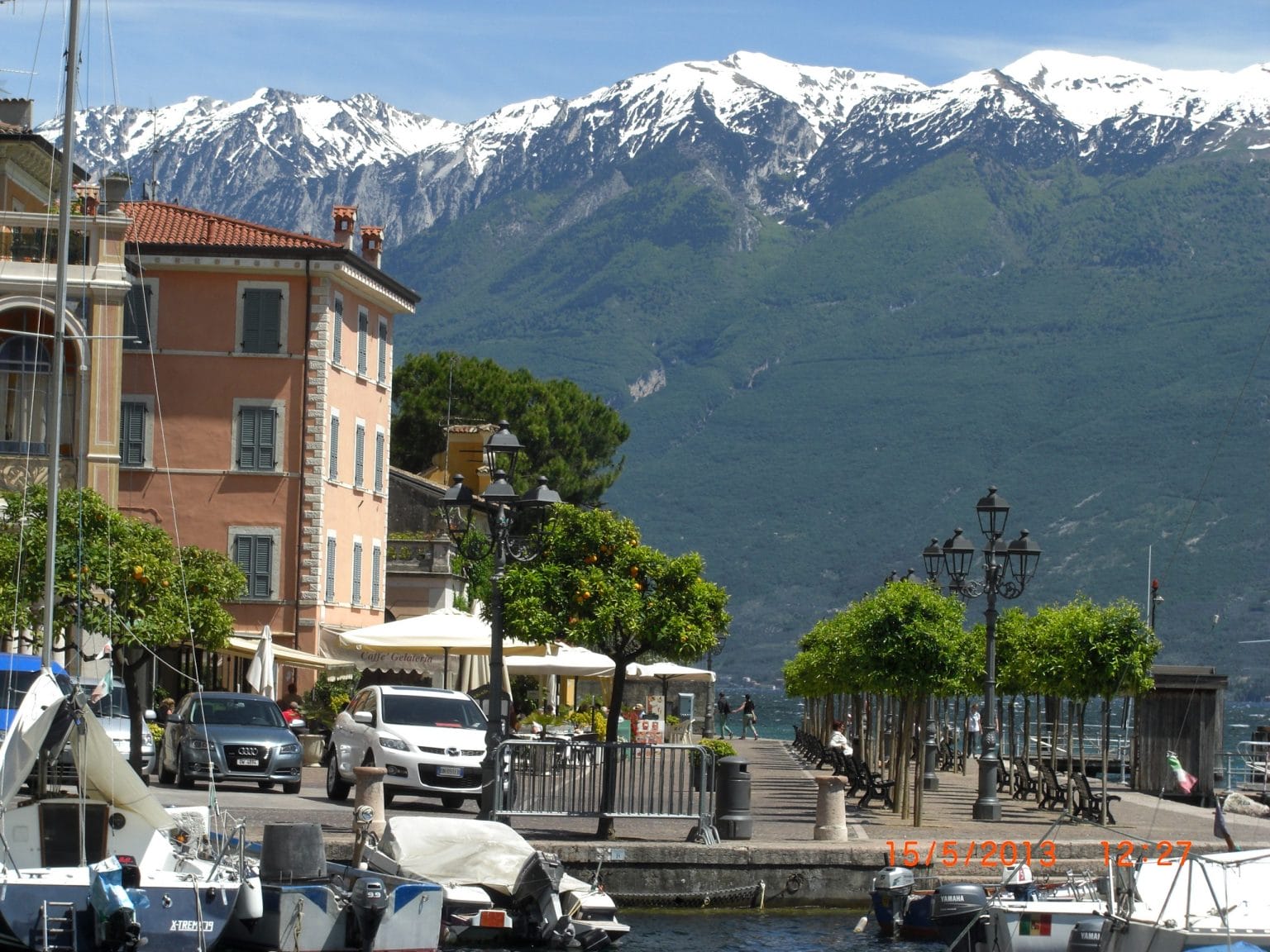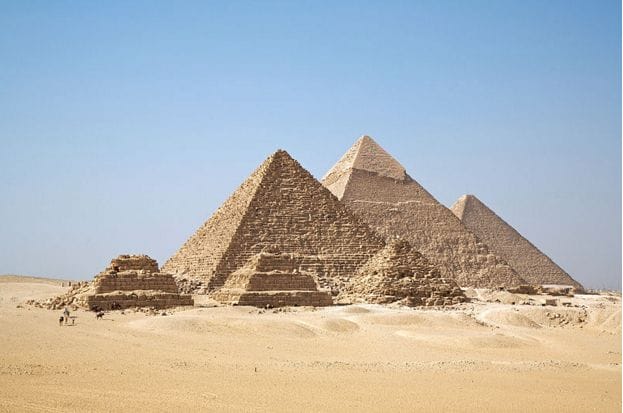Picturesque, understated Gargnano lies at the base of low mountains, about half way along the western shores of Lake Garda. It is the centre of an administrative area of 78km sq2 that includes the lakeside villages of Villa and Bogliaco together with ten hillside communities. The population of the whole area is a mere 3000. But fear not, the low population does not mean that Gargnano is tourist dominated, it retains a characteristic Italian charm, an ambience that is peaceful but not moribund, reflective yet lightly spiced with certain vibrancy.
Getting there
Gargnano is accessible by public transport, and as with most lakeside resorts arrival by ferry is usually the preferred option. But beware – not all of the ferries that criss-cross the lake stop here. For up to date information check out the timetable at www.navigazionelaghi.it
 It can also be reached by the bus service that runs between Riva del Garda and Desenzano (stopping points include Limone, Gardone, Salò and Moniga). The bus station and the tourist information, which is conveniently on the opposite side of the main road, are located a few hundred metres from the harbour.
It can also be reached by the bus service that runs between Riva del Garda and Desenzano (stopping points include Limone, Gardone, Salò and Moniga). The bus station and the tourist information, which is conveniently on the opposite side of the main road, are located a few hundred metres from the harbour.
Harbour and promenade
Overlooking the small harbour is the elegant 16th century Palazzo del Comune Vecchio, the old municipal building. A marble plaque, beneath its impressive portico, commemorates the bombardment the harbour suffered in 1886. Canonballs, fired from Austrian ships, remain imbedded in some harbour buildings.
The wide, café and restaurant lined promenade has two staggered rows of shady benches where you can relax and enjoy views across the lake to the snow capped (depending upon the season) Monte Baldo. Heading south the promenade narrows and soon merges with a wooden walkway over the lake. Where the waters lap the lakeside buildings the walkway sits a respectful distance from those buildings, creating a Venetian canal-like scene.
Historic buildings
Gargano’s palaces and villas bear witness to a prosperous past, whose wealth was based on olive and lemon cultivation.
Close by the harbour is Palazzo Feltrinelli (1898-99). Originally built as a private dwelling, it was seized by Mussolini, and acted as an administrative centre. The University of Milan now use it as a conference centre and language school.
 The neo-gothic Villa Feltrinelli (1892-99) is found a short way along the coastal road. Towards the end of the Second World War Mussolini lived here, effectively under house arrest, guarded by German soldiers. It is now a luxurious and extremely expensive hotel, whose guests can opt for airport transfer by helicopter.
The neo-gothic Villa Feltrinelli (1892-99) is found a short way along the coastal road. Towards the end of the Second World War Mussolini lived here, effectively under house arrest, guarded by German soldiers. It is now a luxurious and extremely expensive hotel, whose guests can opt for airport transfer by helicopter.
By the waterside, near the village of Bogliaco, lies one of the finest villas around Lake Garda. The stunning Palazzo Bettoni, designed in the 18th century by Adriano Cristofori, has echoes of Schönbrunn Palace in Vienna. Inside are many important works of art, but don’t make a special visit – it isn’t open to the public.
D.H.Lawrence and two churches
D.H.Lawrence and his partner Frieda von Richtofen arrived in Gargnano on 18th September 1912. They lived in the village of Villa, on the outskirts of Gargnano, in the Villa Igea. Whilst in residence he completed ‘Sons and Lovers’, one of his great novels, and also wrote parts of ‘Twilight in Italy’, his paean to Lake Garda.
In ‘Twilight in Italy’ he writes about the church and cloister of San Francesco, which is located on the via Roma in Gargnano, and the church and convent of San Tommaso in Villa. He put San Francesco in the category of Churches of the Dove, which he defined as ‘shy and hidden: they nestle among trees … or they are gathered into silence of their own, in the very midst of the town so that one passes them by without observing them…’ He says of San Francesco ‘I passed it several times in the dark, silent little square, without knowing it was a church’. He was captivated by the cloister with ‘its beautiful and original carvings of leaves and fruits upon the pillars’. The road has since been widened so the square is not now discernible.
 In sharp contrast he puts San Tommaso into the category of Churches of the Eagle, which ‘stand high, with their heads to the skies, as if they challenged the world below’. He describes San Tommaso as ‘the thin old church standing above the light, as if perched on the house-roofs. Its thin grey neck was held up stiffly, beyond was a vision of dark foliage and high hillside’. Nowadays finding the church is easy, but the twisting narrow alleyways of the time initially frustrated Lawrence. Eventually though he ‘came out suddenly, as by a miracle, clean on the platform of my San Tommaso, in the tremendous sunshine. It was another world, the world of the eagle, the world of fierce abstraction’.
In sharp contrast he puts San Tommaso into the category of Churches of the Eagle, which ‘stand high, with their heads to the skies, as if they challenged the world below’. He describes San Tommaso as ‘the thin old church standing above the light, as if perched on the house-roofs. Its thin grey neck was held up stiffly, beyond was a vision of dark foliage and high hillside’. Nowadays finding the church is easy, but the twisting narrow alleyways of the time initially frustrated Lawrence. Eventually though he ‘came out suddenly, as by a miracle, clean on the platform of my San Tommaso, in the tremendous sunshine. It was another world, the world of the eagle, the world of fierce abstraction’.
On the 30th March 1913 Lawrence left Gargnano and moved to San Gaudenzio di Muslone, three miles into the mountains.
All the quotes are from D.H.Lawrence’s ‘Twilight in Italy’.
For the more active
The lake and low mountains offer much to tempt outdoor pursuits enthusiasts. The tourist office can provide information about walking trails, but very few of these are suitable for the day visitor. The ‘Tour of the Shrines’ is an easy walk of about one hour that leads through the old streets of Gargnano. ‘In the Footsteps of D.H.Lawrence’ is another easy walk, though it takes three hours.
Centomiglia
September brings the famous Centomiglia, Italy’s longest running sailing race. It starts in Bogliaco, before heading north to Torbole then south to Desenzano and finally returning to Bogliaco.
Music
During the summer months there are free classical concerts in the Sala Castellani and weekly lakeside jazz concerts.
If you are a day visitor your stay will all too soon be over. But it is likely that you will have been captivated by Gargnano’s tranquil charm, and you may well leave with a promise to return.




